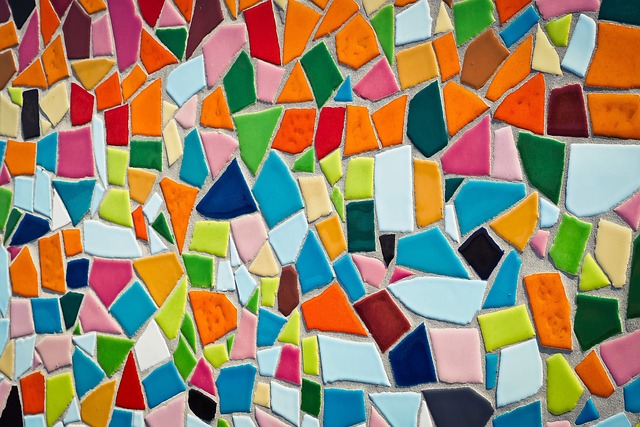# AI Art: Exploring the Boundless Potential of Machine Learning in Visual Expression and Design
In recent years, artificial intelligence (AI) has emerged as a transformative force across various industries, and the realm of art is no exception. The intersection of technology and creativity has given rise to a new genre of artistic expression that challenges traditional notions of authorship and creativity. By harnessing the power of machine learning, artists and designers are exploring innovative ways to create, curate, and distribute art. This article delves into the multifaceted impact of AI on the art world, examining its implications for artists, the creative process, and the future of visual expression.
## The Evolution of AI in Art
Historically, the integration of technology into art has been a gradual process. From the advent of photography in the 19th century to the rise of digital art in the late 20th century, each technological advancement has reshaped artistic practices. Today, AI stands at the forefront of this evolution, enabling artists to push the boundaries of their creativity. Machine learning algorithms, which allow computers to learn from data and improve over time, have opened up new avenues for artistic exploration.
Artists are now utilizing AI tools to generate unique visual content, often collaborating with algorithms to produce works that blend human creativity with computational power. For instance, generative adversarial networks (GANs) are among the most popular AI techniques used in art creation. These networks consist of two neural networks that work against each other to produce increasingly sophisticated images. The results can range from photorealistic portraits to abstract compositions, showcasing the limitless potential of machine-generated art.
Moreover, the accessibility of AI tools has democratized the art-making process. Previously, creating complex digital artworks required extensive technical skills and knowledge. Today, platforms like DeepArt and Runway ML allow users to experiment with AI-generated art without needing a background in programming or machine learning. This shift has empowered a new generation of artists to engage with technology, fostering a diverse and inclusive art community.
## Redefining the Creative Process
The traditional creative process has often been characterized by individual expression and a linear approach to art-making. However, the incorporation of AI into this process is redefining how artists conceptualize and execute their work. By leveraging machine learning algorithms, artists can explore a multitude of possibilities and variations, allowing for greater experimentation and innovation.
Collaboration between human creators and AI systems has become a hallmark of contemporary art. Artists are increasingly using AI as a co-creator, generating ideas, compositions, and even entire pieces of art. This partnership challenges the notion of authorship, as the line between human and machine-generated creativity becomes increasingly blurred. As a result, discussions around originality and the role of the artist in the creative process are evolving.
Notably, the feedback loop between artists and AI can lead to unexpected outcomes. Artists often find inspiration in the surprising results produced by algorithms, prompting them to rethink their artistic vision. This dynamic interplay fosters a sense of exploration and discovery, encouraging artists to embrace uncertainty and serendipity in their work. The unpredictability of AI outputs can lead to innovative artistic directions that might not have been conceived through traditional methods.
## The Future of AI Art
Looking ahead, the future of AI in the art world is rife with potential and possibilities. As machine learning technology continues to advance, artists will likely develop even more sophisticated works that challenge our perceptions of art and creativity. The increasing integration of AI into various artistic fields—such as painting, sculpture, and digital design—will further blur the boundaries between human and machine-generated expression.
One significant area of exploration is the ethical implications of AI-generated art. As AI systems become more adept at creating visual content, questions surrounding ownership and intellectual property are becoming more pressing. Who owns the rights to an artwork created by an algorithm? Should the human artist, the programmer, or the AI itself be credited? These questions challenge existing legal frameworks and necessitate new discussions around authorship in the age of AI.
Additionally, the role of AI in art curation and distribution is set to expand. Algorithms can analyze vast amounts of data to identify trends and preferences, enabling curators to create personalized art experiences for audiences. This data-driven approach can enhance the accessibility of art, allowing more people to engage with and appreciate diverse artistic expressions. As a result, AI has the potential to revolutionize not only how art is created but also how it is experienced and shared.
Furthermore, the integration of AI into the art market is already reshaping the landscape of art sales and valuation. With the rise of NFTs (non-fungible tokens), AI-generated artworks have begun to gain traction in the digital art market. Collectors and investors are increasingly interested in acquiring unique pieces created through machine learning, leading to a growing appreciation for AI art as a legitimate and valuable form of expression.
## Conclusion
The advent of AI in the art world represents a paradigm shift in how we understand creativity, authorship, and artistic expression. As artists embrace machine learning tools and collaborate with algorithms, they are unlocking new dimensions of creativity that challenge traditional artistic boundaries. The ongoing evolution of AI technology promises to further enrich the art landscape, opening up exciting possibilities for future generations of artists.
While the integration of AI into art raises important ethical and philosophical questions, it also provides an opportunity for deeper engagement with the creative process. As we continue to explore the boundless potential of machine learning in visual expression and design, one thing is clear: AI is not merely a tool; it is a catalyst for a new era of artistic innovation. The future of art is poised to be a dynamic interplay between human creativity and machine intelligence, resulting in a rich tapestry of visual experiences that reflect the complexities of our ever-evolving world.

